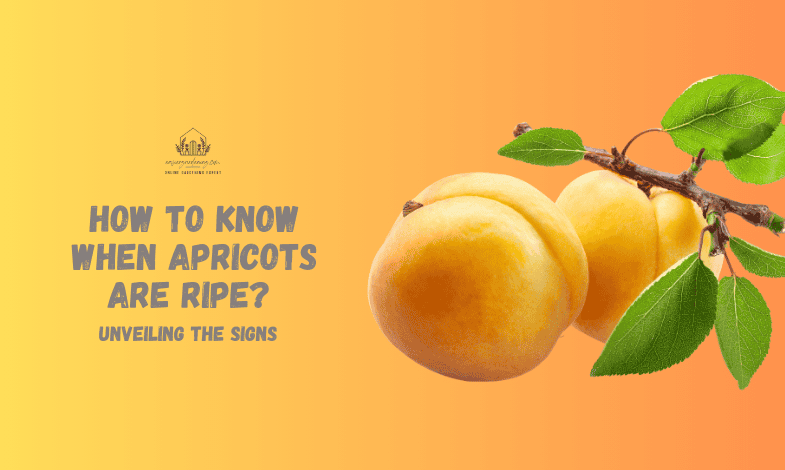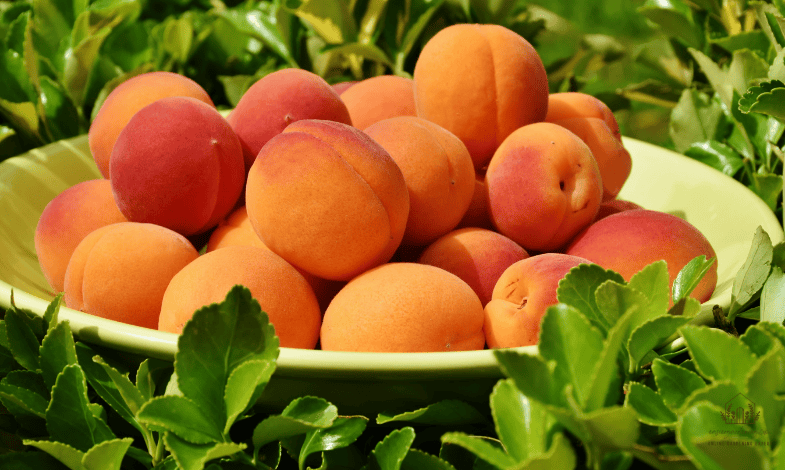Oh, the sweet anticipation of biting into a perfectly ripe apricot! But let’s face it – we’ve all been there, eagerly grabbing an apricot only to find it’s either rock-hard or mushy. Talk about a fruit faux pas! Did you know that apricots are climacteric fruits that continue to ripen after being picked? It’s true! A study by the University of California found that apricots can increase their sugar content by up to 20% after harvest. Mind-blowing, right? Well, fear not, my fellow fruit enthusiasts! I’m here to spill the juicy details on how to spot a ripe apricot like a pro. Get ready to become the apricot whisperer of your local farmers’ market!
Contents
- Look for These Signs
- Follow Your Nose
- Harvesting Apricots
- When to Pick
- Signs They’re Ready
- Handling and Storing
- Handling Tips
- Storage Tips
- Freezing Apricots
- Pruning Apricot Trees
- Why Pruning Matters
- Top Pruning Tips
- Advanced Techniques for Ripeness Detection
- Tech Gadgets for Checking Ripeness
- What Makes a Good Apricot?
- Conclusion
Look for These Signs
Checking if apricots are ripe is pretty simple. Here’s what to keep an eye on:
- Color: Ripe apricots are a lovely golden-orange. If they’re still greenish, give them more time.
- Feel: Give them a gentle squeeze. They should be firm but have a little give. If they’re hard as rocks, they’re not ready.
- Skin: Look for smooth, slightly shiny skin without major blemishes or wrinkles.
| What to Check | Ripe Apricot | Unripe Apricot |
|---|---|---|
| Color | Golden-orange | Greenish |
| Feel | Firm with a bit of give | Hard, rock-like |
| Skin | Smooth, slight shine | Dull, wrinkled |
For more tips on keeping your apricots fresh, check out our article on how to keep apricots fresh.
Follow Your Nose
The smell of apricots can also tell you a lot about their ripeness. Here’s what to notice:
- Smell: Ripe apricots have a strong, sweet fragrance. This means they’re full of flavor and ready to eat.
- Strength: You should be able to smell them without holding them up to your nose.
These simple tips let you quickly tell when your apricots are ripe and ready to enjoy. For more handy tips, check out our articles on how to preserve fresh basil in olive oil and how to grow echinacea from seed indoors.
Harvesting Apricots
Want to savor the best apricots straight from your tree? Timing and technique are essential. Here’s how to ensure you get the juiciest, most flavorful apricots.
When to Pick
Apricots are at their best when they ripen on the tree, which can take up to three weeks for some types (Gardening Know How). Look for a color shift from green to yellowish-orange and give them a gentle squeeze—they should be slightly soft but still firm.
Signs They’re Ready
- Color: Green to yellowish-orange
- Feel: Slightly soft but firm
Handling and Storing
Once you’ve picked your apricots, handling and storing them properly are crucial to keeping them tasty and fresh.
Handling Tips
- Gentle Touch: Handle with care to avoid bruising.
- Cool Them Down: Store in a cool place right after picking.
Storage Tips
Whether you need short-term or long-term storage, here’s how to keep your apricots fresh:
| Storage Type | Temperature | Humidity | Duration |
|---|---|---|---|
| Short-term | Cool place | – | 1-3 weeks |
| Long-term | 31-32°F (-.5 to 0°C) | 90-91% | Several weeks |
(Info from Gardening Know How)
- Avoid Ethylene: To prevent apricots from aging too fast, avoid fruits that emit ethylene gas, like apples and bananas.
- Cut Fruit: To keep cut apricots from browning, dip them in a mix of 3 grams of ascorbic acid per gallon of cold water.
Freezing Apricots
Freezing is a great way to enjoy apricots year-round. Here’s how:
- Prep: Wash, halve, and pit the apricots.
- Peel and Slice: Peel and slice them. If you prefer to leave the skins on, blanch them in boiling water for 30 seconds first.
- Freeze: Lay the slices on a baking sheet to freeze individually, then transfer them to a freezer-safe container.
For more tips on keeping apricots fresh, check out our guide on how to keep apricots fresh.
By following these tips, you can enjoy your apricots for weeks. For more gardening advice, see our articles on how to plant creeping thyme seeds and how to harvest thyme without killing the plant.
Pruning Apricot Trees
Why Pruning Matters
Pruning is like giving your apricot tree a good haircut—it keeps it looking sharp and feeling great. Regular pruning helps your tree stay healthy and produce lots of juicy apricots. Keeping the tree short and wide lets sunlight reach every nook and cranny, boosting fruit production (Not Far From The Tree). Plus, it helps you manage the tree’s growth and keeps it in tip-top shape.
Top Pruning Tips
Here’s how to keep your apricot tree in prime condition:
- When to Prune: The best time to prune is late winter or early spring when the tree is still snoozing. This reduces the disease risk and prepares the tree for a growth spurt.
- Shape It Up: Keep the tree low and wide. Ditch the long branches so light can reach the center. More light means more fruit!
- Thin It Out: Chop off any dead or sickly branches. Thin out crowded areas to improve airflow and light. This helps prevent nasty fungal infections and keeps the tree healthy.
- Make Clean Cuts: Cut at a 45-degree angle above an outward-facing bud. This encourages new growth to spread, keeping the tree in shape.
- Remove Suckers and Water Sprouts: Get rid of suckers (growth from the tree’s base) and water sprouts (vigorous vertical shoots). They steal energy from fruit production.
Stick to these tips, and your apricot tree will be the envy of the neighborhood. For more gardening hacks, check out our articles on keeping apricots fresh and protecting purple fountain grass in winter.
Advanced Techniques for Ripeness Detection
For those who love gardening, figuring out when our apricots are just right can be an art and a bit of science. Let’s jump into some cool ways to tell if your apricots are ready to eat and what to look for in a top-notch fruit.
Tech Gadgets for Checking Ripeness
Lately, tech has made it easier to know when apricots are ripe. One nifty gadget is the DA-meter, which uses Vis/NIR spectroscopy. This fancy tool measures how ripe your fruit is by observing how it absorbs light at two specific wavelengths (650 and 690 nm) near the chlorophyll-a peak (ScienceDirect).
With the DA meter, you can nail the perfect time to pick your apricots, ensuring they’re super tasty and not wasted. This tech helps you avoid picking them too early or too late so you get the best flavor and texture.
What Makes a Good Apricot?
When you’re checking out apricots, a few things matter. Research says fresh weight, dry matter, flesh firmness, and sugar content are the big ones (ScienceDirect).
| What to Look For | Why It Matters |
|---|---|
| Fresh Weight | Tells you how big and juicy the fruit is |
| Dry Matter | Shows how sweet and solid it is |
| Flesh Firmness | Let you know if it’s ripe and ready |
| Sugar Content | Gives it that sweet, yummy taste |
Conclusion
And there you have it, your ultimate guide to spotting ripe apricots like a seasoned pro! You can confidently conquer the fruit aisle or farmers’ market. Remember, the perfect apricot is a color, texture, aroma, and timing harmony. Trust your senses, and don’t be afraid to squeeze those apricots gently. Whether you’re planning to bite into them immediately, bake a mouthwatering apricot tart, or preserve summer’s bounty, you’re now equipped to pick the cream of the crop. So enjoy the sweet, juicy rewards of your newfound apricot expertise. Happy hunting, and may your fruit bowl always be filled with perfectly ripe apricots!


